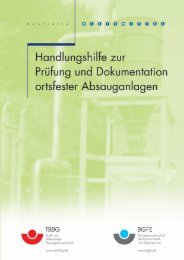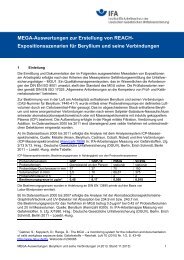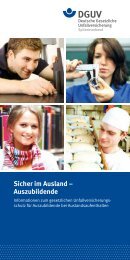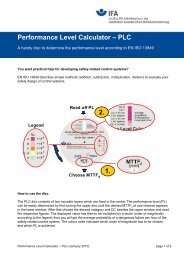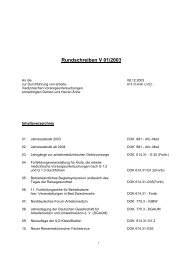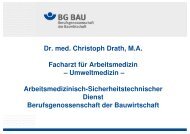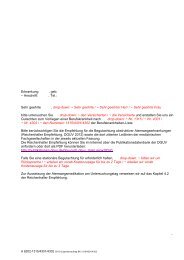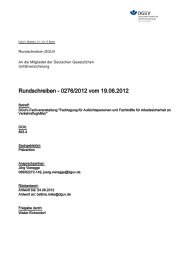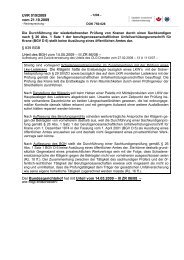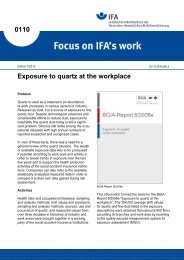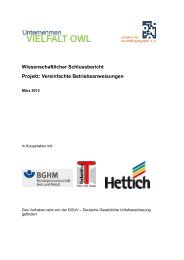Effectiveness of measures to prevent needlestick injuries among ...
Effectiveness of measures to prevent needlestick injuries among ...
Effectiveness of measures to prevent needlestick injuries among ...
Create successful ePaper yourself
Turn your PDF publications into a flip-book with our unique Google optimized e-Paper software.
4 Intervention program evaluation<br />
Corlett et al. evaluated a “no <strong>to</strong>uch” technique for abdominal wall closure following<br />
laparo<strong>to</strong>my [91]. Surgeons were randomly assigned <strong>to</strong> use the traditional technique<br />
with manual wound closure during suturing, or <strong>to</strong> use a “no <strong>to</strong>uch” technique in which<br />
the wound edges are held by <strong>to</strong>othed forceps. The investiga<strong>to</strong>rs assessed the number<br />
<strong>of</strong> glove perforations occurring during closure. They found no significant differences in<br />
perforations occurring during surgery but prior <strong>to</strong> wound closure (9/50 “hands in”,<br />
12/50 “no <strong>to</strong>uch”; p = 0.62), and reported a significant protective effect <strong>of</strong> the<br />
“no <strong>to</strong>uch” technique during wound closure (16/50 “hands in”, 3/50 “no <strong>to</strong>uch”;<br />
p = 0.0017). Although this intervention used a strong design <strong>to</strong> evaluate the new sur-<br />
gical technique, there was no indication that the surgeons had any experience with the<br />
“no <strong>to</strong>uch” method prior <strong>to</strong> randomization, and there was no discussion <strong>of</strong> compliance<br />
included in the paper.<br />
In another pre-post intervention comparison, Linnemann et al. reported no effect <strong>of</strong><br />
universal precautions training on the rate <strong>of</strong> NSI [92]. Results <strong>of</strong> this evaluation were<br />
likely <strong>to</strong> have been biased <strong>to</strong>wards the null due <strong>to</strong> implementation <strong>of</strong> two additional<br />
other safety interventions in the two-years preceding the universal precautions training.<br />
A previously described ecological study by D’Arco et al. investigated a multidiscipli-<br />
nary approach <strong>to</strong> <strong>needlestick</strong> <strong>prevent</strong>ion [43]. From 1987 <strong>to</strong> 1988, three concurrent<br />
<strong>needlestick</strong> <strong>prevent</strong>ion pro<strong>to</strong>cols were implemented. These included installation <strong>of</strong> rigid<br />
disposal containers, staff training regarding HIV and AIDS risks, and training regard-<br />
ing the importance <strong>of</strong> reporting NSI. A 12 % increase in NSI reports was observed<br />
from 1987 <strong>to</strong> 1988, suggesting success in motivating staff <strong>to</strong> report NSI.<br />
Edmond et al. reported no effect <strong>of</strong> an education intervention program paired with<br />
installation <strong>of</strong> bedside needle disposal units (described above) [73]. The details and<br />
goals <strong>of</strong> the educational program were not discussed in the paper. The outcome <strong>of</strong><br />
interest was frequency <strong>of</strong> recapped needles with counts obtained through direct obser-<br />
vation <strong>of</strong> nurses at work.<br />
Training components were included in the programs described by Dale et al. and<br />
Gartner, but were not separately evaluated for efficacy in reducing NSI [42; 48; 93].<br />
Report „Needlestick <strong>injuries</strong>“ 55



